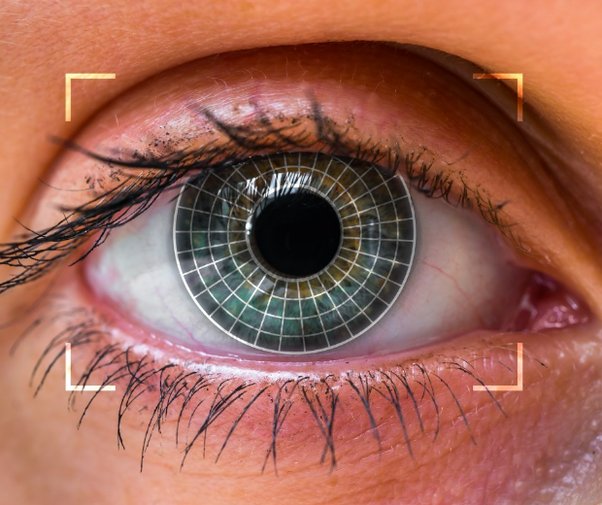Lasik surgery is a popular and effective option for correcting your vision. It works by reshaping the cornea with a laser, which can correct vision problems like myopia and farsightedness. However, there are some people who are concerned about the potential side effects of Lasik surgery. In this article, we’ll explore some of the potential risks associated with cylindrical power, and whether or not it’s possible to cure them by using LASIK.
Contents
- 1 What is Cylindrical Power?
- 2 Symptoms of Cylindrical Power
- 3 Causes of Cylindrical Power
- 4 How is Cylindrical Power Treated?
- 5 Can Cylindrical Power Be Cured By LASIK?
- 6 Results and Outcomes of Laser Eye Surgery for Cylindrical Power
- 7 What Is The Maximum Power For Eye Lasik?
- 8 Can Lasik Correct Any Cylindrical Power?
- 9 How Do You Fix Cylindrical Eye Power?
- 10 Conclusion
What is Cylindrical Power?

Cylindrical power is the amount of optical power that is contained within a certain area (called an annulus) on the surface of a cylindrical lens. Cylindrical lenses are used in many applications, such as eyeglasses and telescopes, to correct astigmatism, improve contrast and image resolution, or adjust focus. Cylindrical lenses are characterized by their curvature or power. This is expressed in diopters (D) and tells us how much the lens bends light. The higher the number of diopters, the more powerful the lens will be. For example, a +4D cylindrical lens bends light four times more than a +1D lens. Cylindrical power is important in optometry as it can help correct astigmatism, which causes blurry vision due to an irregularly shaped cornea or lens. In addition, cylindrical power can be used to improve the optical performance of lenses and other devices.
Symptoms of Cylindrical Power
Cylindrical power is a type of optical power that creates a smooth, cylindrical image on the eye’s surface. It is typically created by either a wavefront correction system or a refractive device. Most people with cylindrical power have no symptoms, but those who do may experience blurred vision and headaches.
There is no cure for cylindrical power, but there are treatments that can help minimize symptoms. Some people find relief from eyeglasses or contact lenses, while others require surgery to correct the problem. If you are experiencing any symptoms related to cylindrical power, consult your doctor for advice on how to manage them.
Causes of Cylindrical Power
Cylindrical power is a condition that affects the vision of some people. Cylindrical power is caused by an irregular shape or size of the cornea and can be corrected by Lasik surgery. Lasik can also improve your vision if cylindrical power is the result of astigmatism.
How is Cylindrical Power Treated?
Cylindrical power is treated in a number of different ways, depending on the severity of the condition and the individual’s needs.
The most common form of treatment for cylindrical power is lasik surgery. This surgery removes the affected area of vision with a laser, which generally results in improved vision. Lasik can also correct other eye problems that may be caused by cylindrical power, such as myopia (nearsightedness) and astigmatism.
Other treatments that may be used to treat cylindrical power include spectacle correction, contact lenses, and refractive surgery. Contact lenses are often the most comfortable and effective option for people with cylindrical power, as they do not require surgery or medications to be taken daily. Spectacle correction devices use special glasses or contacts to alter the shape of your eyes and make them more round or cylinder-like. Refractive surgery is a more extensive procedure that can correct various issues related to cylindrical power, such as farsightedness or nearsightedness.
Can Cylindrical Power Be Cured By LASIK?
The Lasik procedure can be used to treat astigmatism if your cylindrical number is below 4. Your surgeon will reshape your cornea to a more regular shape or symmetrical shape using the Lasik procedure. You should not undergo this surgery if your number is higher.
Results and Outcomes of Laser Eye Surgery for Cylindrical Power
Lasik is a popular surgical procedure used to correct vision problems such asopia, myopia, and astigmatism. The technique uses a laser to reshape the cornea, eliminating the need for glasses or contacts. Lasik can be used to correct single vision and nearsightedness, but it is not effective for farsightedness or astigmatism.
There are several types of Lasik surgery: femtosecond laser LASIK (FL), multi-shot laser lasik (ML), premium laser Lasik (PL), and excimer laser Lasik (EL). Each has different results and outcomes.
FL LASIK produces the best results in terms of uncorrected visual acuity and color perception. However, FL Lasik is less effective at correcting farsightedness or astigmatism than ML or PL Lasik procedures. ML Lasik produces intermediate results in both uncorrected visual acuity and farsightedness correction, while PL offers better uncorrected visual acuity but less good farsightedness correction. EL LASIK has the poorest uncorrected visual acuity and color perception of all the types of lasers but is most effective at correcting farsightedness.
It is important to understand your eligibility for Laser Eye Surgery before scheduling an appointment with your doctor. Some factors that can affect eligibility include your age, eye health history, refractive error and quality of life expectations after surgery.
What Is The Maximum Power For Eye Lasik?
Therefore, it is recommended that the ideal upper limit is -8.0, while the acceptable upper limit is -10.0. Above this number, LASIK should be avoided, and an ICL implant would be a better option. The upper limit of LASIK correction for a plus number, i.e. hypermetropia, is +5.0.
Can Lasik Correct Any Cylindrical Power?
Lasik surgery can correct -8.0 power if your cornea thickness is less than 495 microns. Therefore, if your cornea thickness is less than 495 microns, Lasik surgery is clearly not for you.
If your cornea thickness is greater than 495 microns, Lasik surgery may still be a good option for you. However, because the laser removes only a thin layer of your cornea, there is a risk that some residual layers of the cornea may not be corrected – resulting in decreased vision. Therefore, if you are considering Lasik surgery, it is important to discuss your individual case with one of our experienced Lasik surgeons.
How Do You Fix Cylindrical Eye Power?
There are various exercises that can be performed:
- Palming. The technique of covering both eyes gently with your palms is called palming.
- Blinking.
- The Figure of Eight or circular eye movements.
- Convergence eye exercises.
- Moving your eyes from side to side.
Conclusion
It may be concluded that cylindrical power can be cured by Lasik surgery. However, more research is needed to fully understand the long-term effects of this treatment.
The results of this study suggest that cylindrical power can be cured by Lasik surgery. However, more research is needed to fully understand the long-term effects of this treatment.
Lasik surgery is a safe 10-minute procedure to help you get rid of glasses. MantraCare offers the most advanced Lasik options. If you have any questions on lasik surgery feel free to reach out to us at +91-9711116605. We provide effective Lasik surgery in Delhi.
